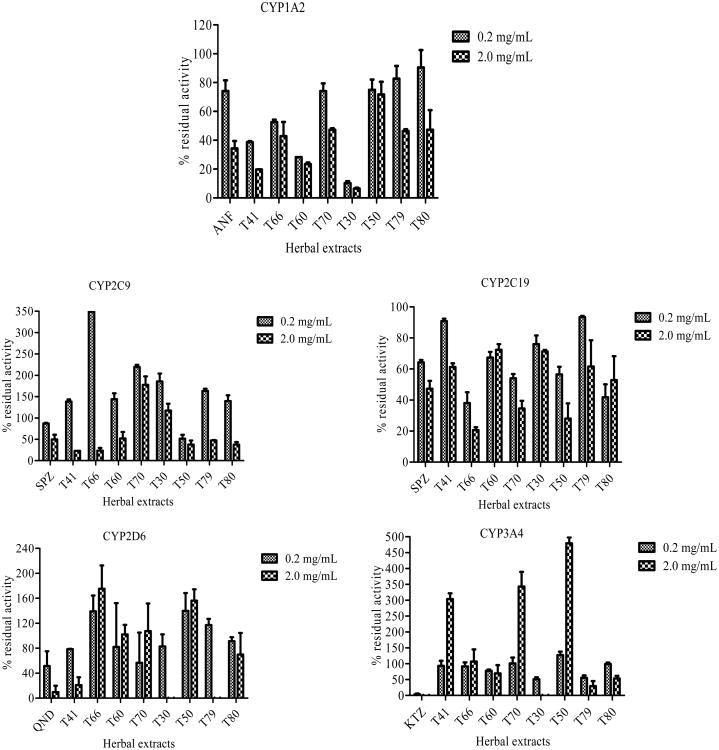Fig (2).
Two point screening of herbal medicines where 0.2 and 2.0 mg/ml of each herbal extract was evaluated for inhibitory effects on each of the five CYPs, 1A2, 2C9, 2C19, 2D6 and 3A4. For each of these CYPs, a positive control diagnostic inhibitor was used, alpha-nathoflvaone (ANF, 0.01 and 0.10 μM) for CYP1A2, sulfaphenazole (SPZ, 1.0 and 10.0 μM) for CYPs 2C9 and 2C19, quinidine (QND, 0.01 and 0.1 μM) for CYP2D6 and ketoconazole (KTZ, 0.01 and 0.1 μM) for CYP3A4. H. hemerocallidea capsule (T41) and powdered leaves (T30), L. frutescens tablets (T50) and tea cut (T79), T. officinale root (T66), E. purpurea capsules (T60), M. oleifera powdered leaves (T80) and GABA capsule (T70).

